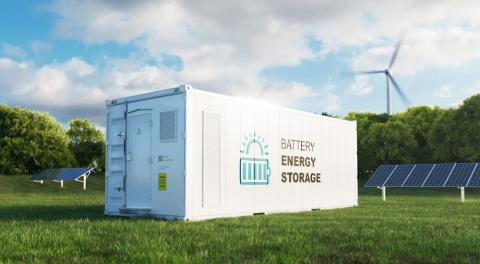A Monumental Wealth-Creation Moment in Emerging-Market Wind and Solar
The way oil and gas companies tell it, their best days are still ahead of them thanks to fast-growing emerging economies with insatiable appetites for energy.
The reality taking hold, however, shows an entirely different historical trend at work: Wind- and solar-powered sources today are providing a low-cost alternative to natural gas, coal and diesel in these countries, where the vast majority of the world’s population lives.
The numbers are jarring.
Climate Scope 2014, a report published last month by Bloomberg New Energy Finance (BNEF), delves deeply into the shift, analyzing electricity prices in 55 developing countries.
BNEF’s findings:
- Average industrial electricity prices across those countries last year for electricity coming from the grid was $147.90 per megawatt-hour, compared to the average levelized cost of $82 per megawatt-hour for wind energy (levelized costs are those calculated by dividing installation expense by life-time energy output). The report adds this: “Industrial customers in these nations could potentially enjoy substantial savings by purchasing wind-generated power rather than paying for what they currently receive from the grid.”
- The levelized cost for solar-powered electricity averaged about $142 per megawatt-hour in those countries, roughly the same as current industrial electricity prices. More important: solar costs will fall over the next few years, with most estimates calling for a 50 percent reduction by 2017.
- Diesel-powered electricity—the only electricity-generation in many corners of the developing world—remains prohibitively expensive. Costs for this electricity exceeded $150 per megawatt-hour in most developing countries, and in some cases ran as high as $220 per megawatt-hour. Distributed generation from roof-top solar is easily on par with diesel generation already, averaging $150 per megawatt-hour today but set to go down as innovations and scale come into play. An excerpt on this point: “In countries where less than half the population has access to a grid of any sort, distributed sources of clean generation represent a logical and less costly alternative solution to diesel generation.”
The takeaway for investors is that solar will become as attractive as wind in a very short period of time and that both of them will leave hydrocarbons behind as the high-cost alternative in emerging markets. It’s a complete reversal from just a few years ago.
BNEF, by the way, isn’t alone in its assessment. Similar conclusions have been reached recently by the Global Commission on the Economy and Climate, an international partnership of eight research groups.
Here’s an excerpt from that work: “A massive wave of energy infrastructure investment is coming: to keep up with development needs, around US$45 trillion may need to be invested in the next 15 years. This gives countries a chance to build robust, flexible energy systems that will serve them well for decades to come, but it also represents a critical window to avoid locking-in technologies that expose them to future market volatility, air pollution, and other environmental and social stresses.”
A monumental wealth creation event is taking shape, in other words, and the big value-appreciation potential points in the direction of renewables.
There’s no reason to think this trend will change, a truth that puts hydrocarbon investing at risk.
Deborah Rogers is an IEEFA energy consultant and president of Energy Policy Forum.














